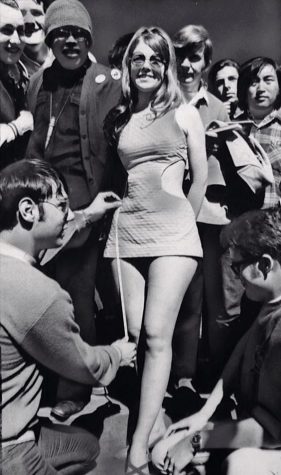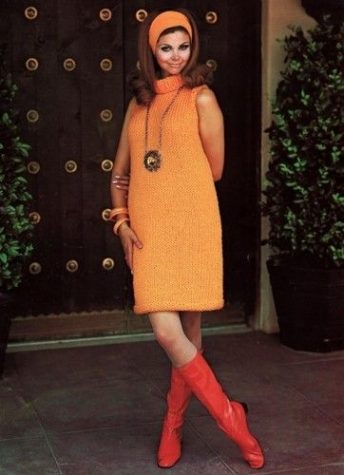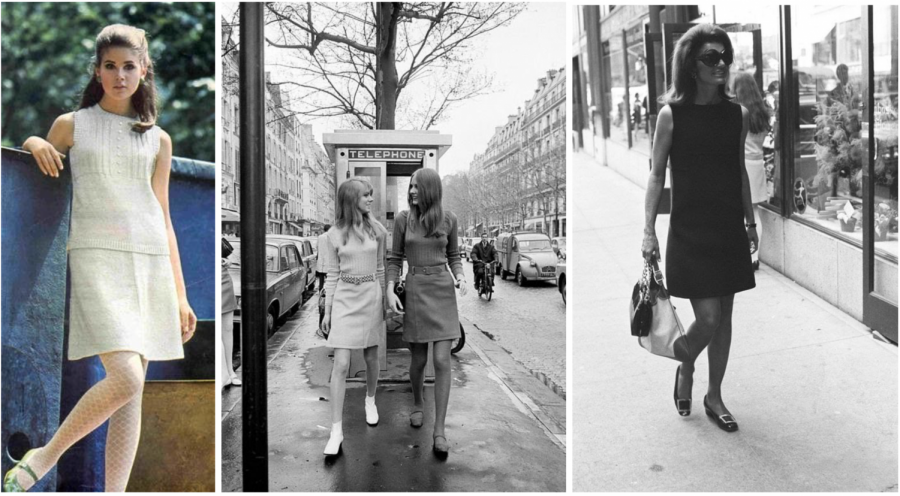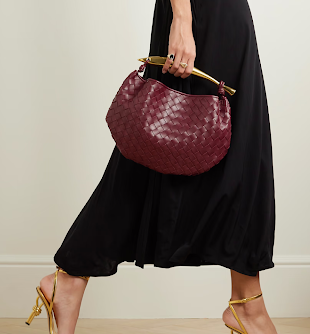The Controversial Past of the Miniskirt
Credits (left to right): flickr.com, isabelcostassixties.tumblr.com, footwearnews.com
From left to right: A woman poses in a grey minidress. Two women in front of a telephone booth wear miniskirts. Jackie Onassis wears a dark minidress.
The 1960s were probably the most controversial decade of the 20th century. With the most social change, from the civil rights movement to the protests against the Vietnam War, this decade was jam-packed with division. In addition, there was another controversial change made on the fashion front: the introduction of the miniskirt in 1964. Although it sounds unbelievable, the uniform skirts we wear at Montrose would actually have been considered scandalously inappropriate if they had been worn 60 or more years ago. However, to fully understand how revolutionary this fashion change was, we need to go back to about 20 years before the introduction of the miniskirt: World War II.
I know what you’re probably thinking: “How did the 1940s influence the controversy over this mid-60s trend?” As many of us are aware, one of the more memorable events of the 1940s was World War II. And because of the draft, many women were left to support themselves and join the workforce, something that was rather uncommon before that time. They soon adopted men’s attire because of this societal change, inspiring the designers of the time to come out with masculine-inspired womenswear. Many women sported tailored pants, men’s-cut blazers, belts, and loafers. Skirts were still worn; however they were below the knee and of a slimmer, more business-like silhouette.

Fast-forward to 1947: the war is over, and America wants nothing more than to return to some form of stability. This meant that men returned to work, and women returned to their “feminine homely duties,” a societal construct that definitely remains very sexist. This change was mirrored on the fashion front with Christian Dior’s very first collection, where he introduced the “New Look” silhouette. This silhouette, most often affiliated with the 1950s, included a cinched waist and a full flared skirt. I think the Metropolitan Museum of Art put it perfectly when they wrote: “…the ‘New Look’ celebrated ultra-femininity and opulence in women’s fashion. After years of military and civilian uniforms, sartorial restrictions and shortages, Dior offered not merely a new look, but a new outlook.” This style, which remained popular until the around the mid-1960s, was looked at as socially acceptable because of how modest and classic it was.
Now it’s important to note that the miniskirt began to creep its way into the fashion industry in 1950s sci-fi films such as Flight to Mars and Forbidden Planet. However, this was seen as pure outlandish costume instead of mainstream fashion. Any woman daring enough to wear a short skirt in this rigid decade was heavily judged. This brings us to Mary Quant and the rebellious youth of the 1960s.
Something I’ve always found interesting about the historical context of this dramatic change in silhouette is how widely discussed the “changing times” were, yet many people were reluctant to accept the miniskirt into mainstream fashion.

Following the death of President John F. Kennedy in 1963, it was described as “the weekend America lost its innocence” by CBS news reporter Bob Schieffer. Coincidence or not, one year later in 1964, the “provocative” miniskirt first hit the fashion scene and replaced the modest “New Look” silhouette. British designer Mary Quant, “the mother of the mini skirt,” along with Parisian designer André Courrèges, defied the idea that fashion was not for the youth by marketing her product to young women looking to break the modest mold of the 1950s and fashionably express themselves. When asked where she got her inspiration for the miniskirt, Quant famously described spying on a dancer in a tap class, saying: “She was wearing a short, pleated skirt about 10in long, with a skinny black sweater, black tights and a bob haircut. What struck me was how the whole outfit focused on what she had on her feet: a pair of white ankle socks, and a pair of patent tap shoes with ankle straps … From that day on I was struck with this lovely vision of legs and ankles.” However, the miniskirt sparked outrage in many people who still held traditional values and did not have the same fascination with seeing legs that Mary did.
As the miniskirt spread throughout the rest of Europe and then to America, problems arose as past generations did not want to come into this new age of fashion, with Coco Chanel herself describing the miniskirt as “just awful.” Unsurprisingly, the miniskirt actually got banned in a few countries, Africa being one of them. Many professional places all over the world also began refusing service to women wearing miniskirts that were deemed too short. The miniskirt was so under attack that many fashion-forward women came together and formed the British Society for the Protection of Mini Skirts, even going so far as to protest outside of the House of Dior in 1966 for the protection of their beloved trend. These women, along with other participants of the trend, even began to be referred to as “Ya-Ya Girls” (coming from “yeah yeah,” a popular catcall of the time). However, with support from fashion icons such as Twiggy, a famous model from the 60s, along with Jackie Onassis, former First Lady, the miniskirt remained popular for the rest of the decade.


So, why spread education on the history of the miniskirt? Historically, when a new fashion change is introduced, it is almost always met with pushback. What we think of as “modest” or “tame” by today’s standards was wildly inappropriate 60 years ago. Now all we can do is wonder what the “miniskirt” of today is, and how it will be perceived in 60 years. If you want more information on this topic, I used articles from contrado.com, snippet history.wordpress.com, and bbc.com.
Chloe Stefani ’24, Fashion Editor
24cstefani@montroseschool.org











